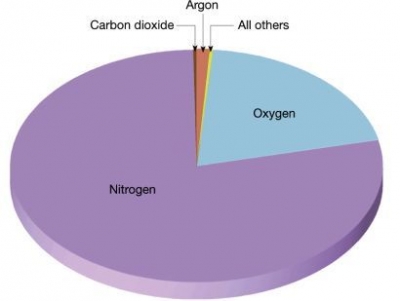
|
Covering the surface of Earth like a thin blanket is a layer of gases that forms the atmosphere. It is made up of 78 per cent nitrogen, 21 per cent oxygen and 0.04 per cent carbon dioxide. The minute, remaining percentage is made of some other gases, water vapour and dust. We barely notice this all-enveloping atmosphere, but without it the Earth would be lifeless as the Moon. |
Earth’s atmosphere is composed of about 78% nitrogen, 21% oxygen, 0.9% argon, and 0.1% other gases. Trace amounts of carbon dioxide, methane, water vapor, and neon are some of the other gases that make up that remaining 0.1%. While the earth’s atmosphere is mainly gases, it also contains tiny particles such as dust and pollen. Some unnatural particles also collect in the atmosphere and cause air pollution. These include anything from aerosols to carbon emissions from vehicles and power plants.
As humans, we rely on the atmosphere around us for life. We breathe it, we live in it—without it, we wouldn’t survive. Not only does the atmosphere around us need to be made of a certain composition for us to thrive, but it also needs to be one in which plants and food can grow, and one that protects us from the elements. Having oxygen we can breathe is just as important as being protected from the harsh sun rays, or the open expanses of space, and Earth has just the right location and atmospheric chemical composition to sustain life for humans and all other life forms that call Earth home.
Credit: Worldatlas
Picture credit: Google




